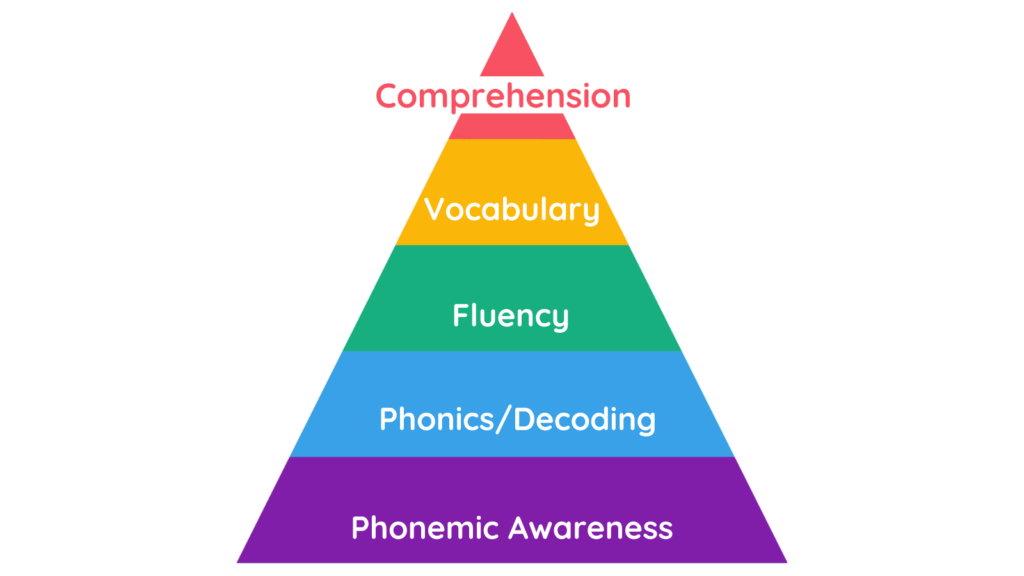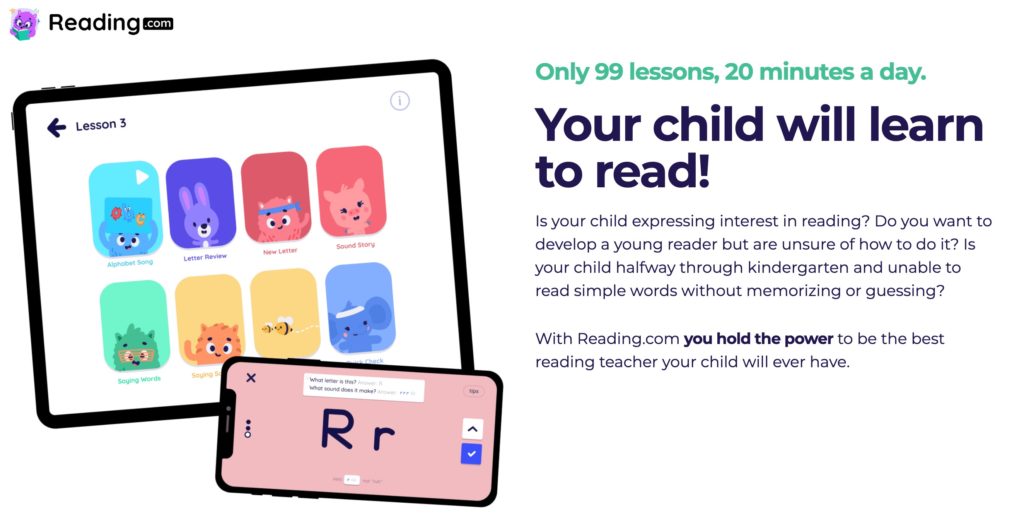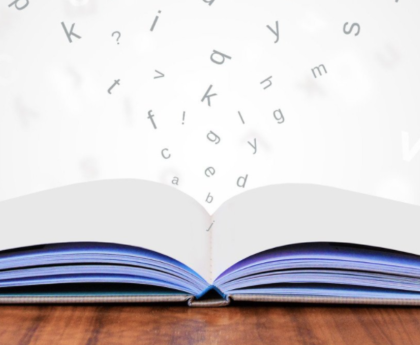The skill of reading can be broken down into small foundational skills that are often visualized on the Reading Pyramid. We breakdown the 5 levels that make up reading comprehension.

Today’s parents want to prepare their children for the world ahead and support them fully. But the world of learning to read has changed. It’s more evident than ever that some kids aren’t getting what they need in the classroom, with many children reading below grade level.
Perhaps you’re experiencing this yourself within your own family. Feeling unsure your child is where they need to be to succeed in the future…
We know it can be stressful, but it is simple to understand how reading is learned. There are five crucial areas your child will need to master to set them up to love reading.

The Reading Pyramid
The skill of reading can be broken down into small foundational skills that are often visualized on the “Reading Pyramid.”
Step 1: Phonemic Awareness
The first foundational skill is the understanding of phonemes. As adults, it can be easy to overlook the individual sounds that make up each word. These sounds are commonly known as phonemes. As your child begins to group words together or blend sounds into words, they gain phonemic awareness.
Step 2: Phonics/Decoding
Once your child has developed phonemic awareness in spoken language, they are ready for phonics. Phonics teaches them the relationship between the individual sounds in spoken language and letters—or letter combinations—in written language. To successfully recognize and decode new words in the future, your child needs a solid understanding of phonics.
Step 3: Fluency
As children develop phonemic awareness, phonics skills, and vocabulary, their reading fluency will grow! A fluent reader is no longer decoding, but quickly recognizing words and attaching meaning. If your child struggles with reading fluency, however, their reading can sound choppy and awkward. When children have difficulty at this stage—especially as your child heads into upper elementary grades where fluency becomes increasingly important—it can ultimately manifest into an aversion to reading.
Step 4: Vocabulary
A rich and varied vocabulary knowledge is invaluable for your young reader. Your child’s vocabulary will grow in many ways. From sight words to spoken words, they will pick new words from all over. As vocabulary and decoding skills grow, connecting meaning to completely new words will become natural.
Step 5: Comprehension
Great readers deeply immerse themselves in the stories they read. They can visualize characters, hear dialogue in their heads, and imagine details beyond the page. Great readers think about what is happening in a story and share the emotional journey of the characters. This is comprehension–the ultimate goal for your young reader.
Want More?
We believe that every parent holds power to be the most engaging, effective teacher their child will ever have. Reading.com is here to help you unlock that power. Redeem your free trial of the Reading.com reading program today!






